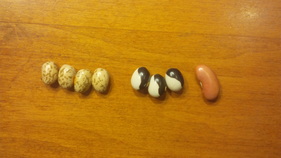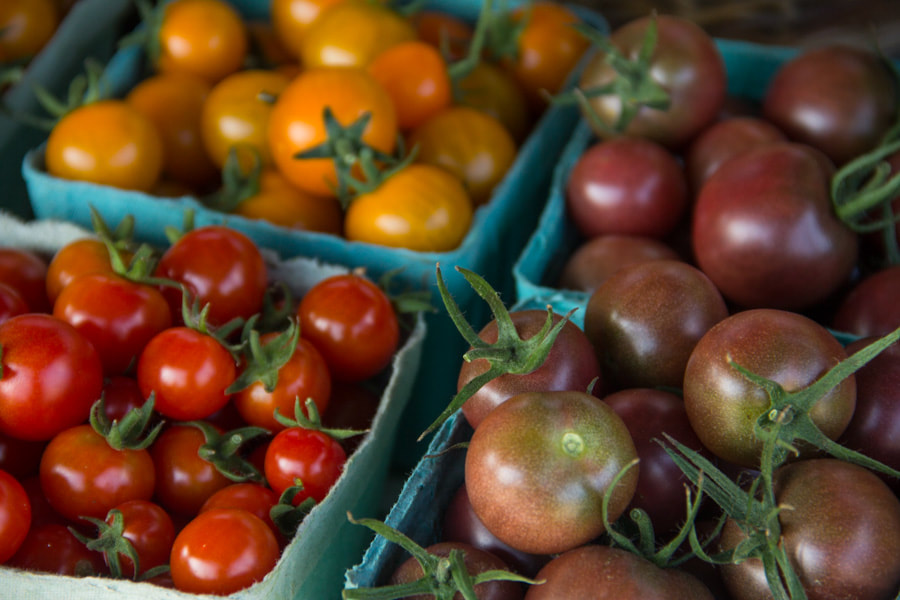 This past week has been another week of putting the fields to rest for the winter. Rounding up, sorting, and bagging row covers was one of our tasks this week. Last year, we stored the row cover in bags on the ground in our drive shed and the mice really enjoyed making complex nests and tunnels in them. So this year I had find a creative solution for foiling the rodents. So now the row covers are bagged in empty grain bags, tied with twine, and hung from rafters of the drive shed. If the mice can get into these they deserve the covers! As I type this, Rob is power ploughing the rows we plan to use for early brassicas (turnip, radish, broccoli, cauliflower, etc.) next year as well as the rows where the peas will be planted. These will be the first crops planted next spring so we try to prep as much as possible in the fall so that we are not delayed in the spring. Once power ploughed, the bare soil in these rows will be covered in giant sileage tarps to protect them from high winter winds and to help warm the soil earlier in the spring. We also had a dry day this week to pick all the beans we grew for dried beans. We don't include dried beans in the shares (primarily because they aren't typically fully dry by the end of the shares) but we grow them for our own use through the winter. Due to our wet summer, the beans are not fully dried or cured yet, so we spread them out on drying racks that Ian assembled in the drive shed. I hope in a couple weeks they will be ready to be shelled. Hand shelling 600 - 800' of dried beans can be monotonous and time consuming, but we try to do this task whenever we sit down to watch a movie during the winter months. I am excited to try all the varieties this year; we've grown black beans, kidney beans, pinto beans, broad beans, and calypso beans. We also tried chickpeas and lentils but the chickpeas germinated very poorly and the lentils didn't produce enough to bother harvesting. I've had some members ask about reserving shares for next year so I thought I'd provide a few details here. The cost of the shares will remain the same: the small share is $400 and the large is $550. If you reserve and pay in full prior to February 1st, you will save 10%. The egg shares will increase to $110 for one dozen eggs and $65 for 1/2 dozen eggs. Both the egg and vegetable shares will be for 20 weeks, as they were this year. We did have several share members request more eggs available for purchase next year. At this time, we won't increase the number of egg shares, even though we love being able to provide fresh, pastured eggs to customers. For us, eggs are very much a 'lost leader' and it does not make financial sense to increase production until we can figure out a way to decrease our costs. The cost of the add-on items I mentioned in a previous post has not been finalized yet. I plan to calculate the actual costs in November and have our website updated with 2015 information by December. I will write a blog at that time to let people know that registration is open. For members that would like to reserve a share now so that they don't have to worry about it in the new year, can simply send me an email specifying the size and provide a post-dated cheque for early January. Those that prefer to pay via email transfer can let me know the share size they want and I will send a reminder email regarding payment in early January. If you have any further questions about next year, don't hesitate to speak to me at the pickup or send me an email. Weekly Share Contents: Potatoes Onions Winter Squash Parsnips Garlic Celery Kale OR Cabbage Parsley Our squash harvest has been plentiful this year and I know some share members are looking for interesting ways to use up the squash they have been receiving. I thought I'd take the time to outline the benefits and uses of each type of squash.
Delicata Delicata (sometimes called Sweet Potato squash) are a mild, sweet squash that I use primarily in mixed vegetable dishes such as curries, stews, mixed roasted vegetables, and stir fries. The skin on these squash is thin and tender so no peeling is required. Generally, I slice in half length wise, scoop out the seeds, and slice in half moon pieces. As a dessert treat, I have also tossed these half moons with cinnamon, coconut sugar or cane sugar, oil or butter, and a pinch of salt, Then I roast at 375 degrees for 15 minutes or so. Red Kuri Hubbard These are my favourite squash and they have thick, flavourful flesh and edible skin. No need to peel - I simply cut into chunks and cook. I think the flavour of this squash shines brightest when used in soups or pureed into a side dish. To make a pureed side dish, I cut in half and scoop out the seed and then roast, cut side down, until tender. Then I break into pieces and put in my food processor along with coconut oil, cinnamon, maple syrup, and salt. Once pureed I scrape into a casserole dish and bake for another 10 minutes or so. Acorn Acorn squash are the one squash I use exclusively as a side vegetable. Simply cut in half, scoop out seeds, and roast, cut side down, until tender. I add a few tablespoons of water to the pan to help steam them and keep them moist. Since acorn squash skin is not edible and is ridiculous to try and peel, I don't use them in any dish that requires this. I enjoy drizzling them with a mixture of coconut oil or butter, maple syrup, garlic, cayenne pepper, and salt. Butternut Squash Commonly used in soup and stews, butternut squash has a mild and slightly watery flavour. Since its flavour is watered down, I find butternut squash needs more spices and rich flavours added during cooking than the red kuris. The skin is not edible, but does peel easily. I cut a thin slice off the top and bottom so that it sit upright on my cutting board. Then I use a chef's knife to peel the skin off in long strips, rotating around as I go. While all squash improve in flavour when left to sit before using, butternut benefits the most. A butternut will keep for up to 6 months and the flavour will improve with age. Pie Pumpkin Other than for pie, I enjoy pie pumpkins in soup and other baking such as muffins, scones, and cookies. Since pie pumpkins don't store for as long as some squash, I roast several at one time, scoop out the flesh and puree in large batches. I then freeze the puree in ziplock bags for quick use in baking throughout the year. Recently, I discovered this recipe for a Pumpkin Latte and it is delicious! And certainly healthier than certain unnamed coffee chain lattes. You can use coffee, black tea, or dandelion tea to make the latte.
0 Comments
Leave a Reply. |
Archives
February 2020
|


 RSS Feed
RSS Feed